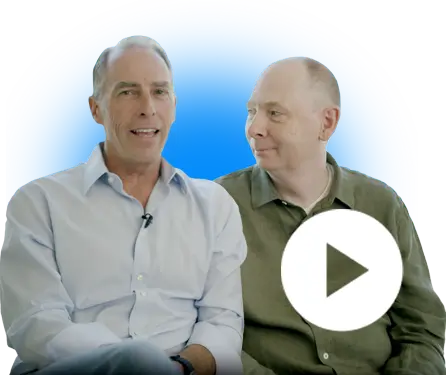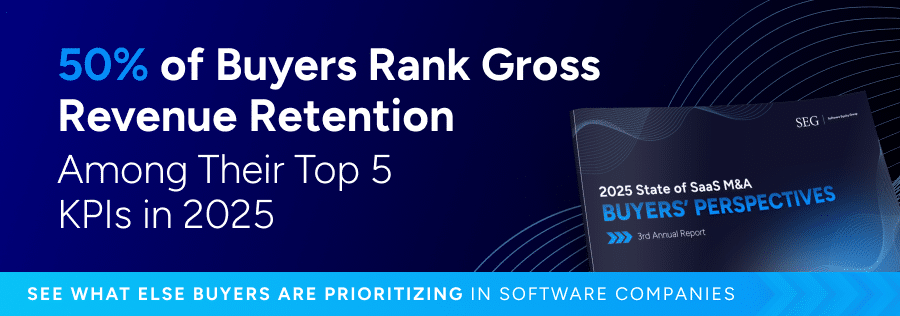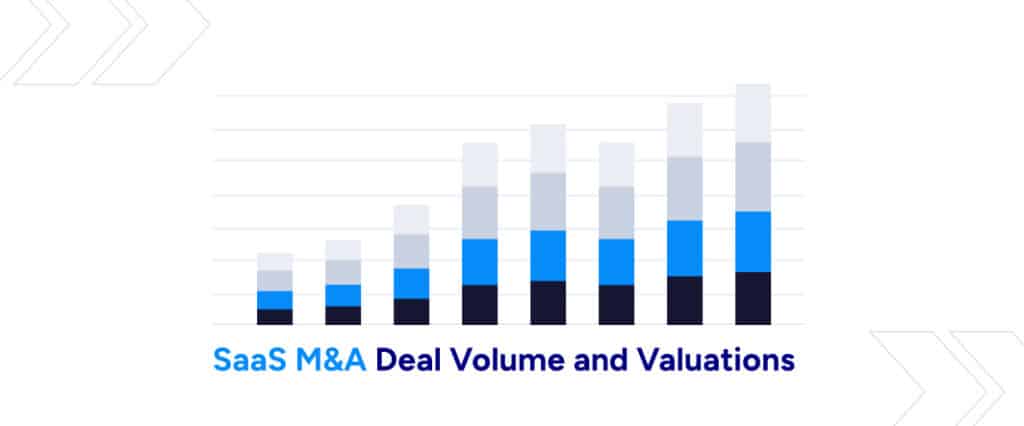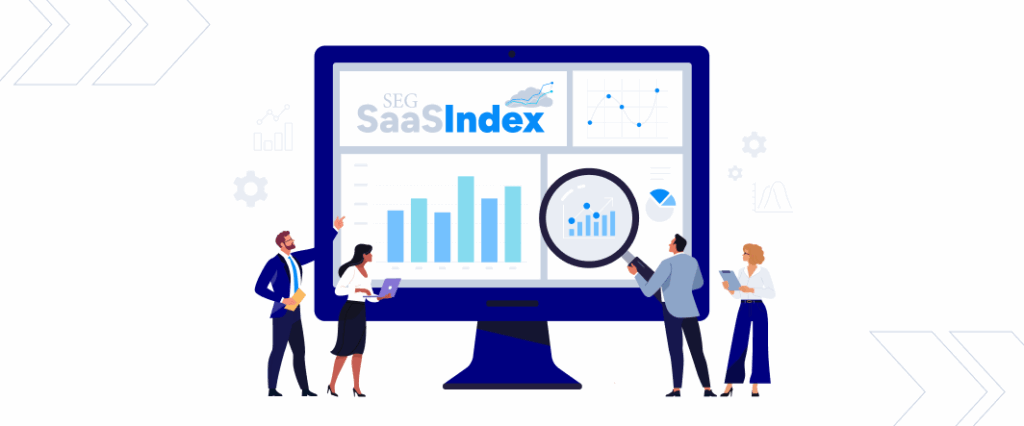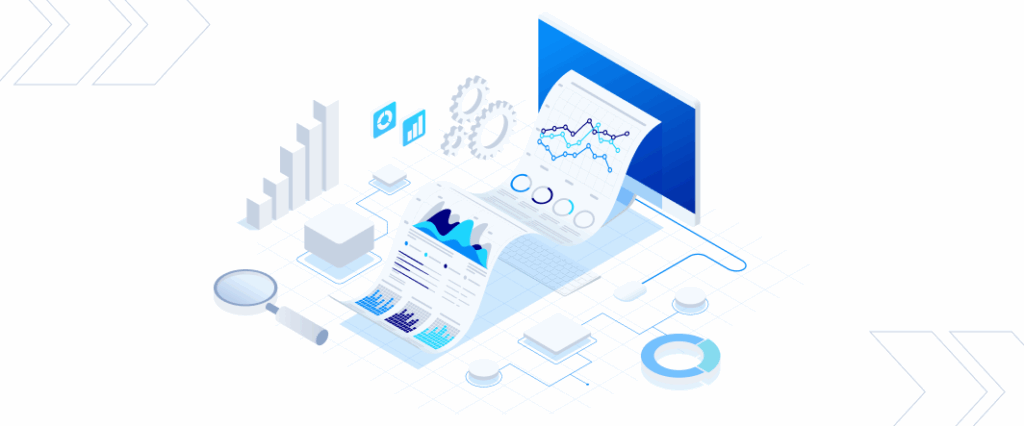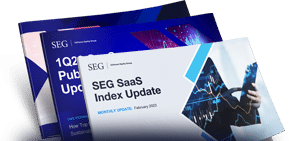Gross Revenue Retention Rate + Gross Profit: Why Buyers Prioritize These 2 Key Metrics

If you’re like most SaaS founders, you’re probably focused on finding and acquiring new customers. But buyers are looking for more than just strong revenue growth.
We see this reality year after year in our annual State of SaaS M&A: Buyers’ Perspectives Report, which unveils the priorities of top software-focused private equity investors and strategic buyers.
Buyers want solid gross retention rates and a healthy gross profit margin. These go beyond growth to tell the real story about your business’s health and potential.
So, let’s look at these two critical measurements, why buyers care about them, and steps you can take to improve them.
Gross Revenue Retention & Gross Profit Margin
Gross revenue retention’s perennial placement in our research’s top 3 most important metrics tells you what buyers are looking for: SaaS companies that can scale — profitably.
While gross profit margin has fallen in importance slightly over the past few years, 46% of investors and 60% of strategic buyers still rank it within their top five most critical KPIs when considering an acquisition.
Together, these two metrics define stable, efficient, mission-critical, recession-resistant businesses. Buyers use them to assess a SaaS company’s health, risk, and prospective long-term growth.
Gross Revenue Retention Rate
How to Calculate Gross Revenue Retention
Gross revenue retention simply measures the percentage of recurring revenue retained from existing customers over time. It counts losses from customer churn but doesn’t include gains from new business or upgrades.

A GRR rate proves revenue stability, with the highest possible rate landing at 100%. A high GRR rate often showcases strong customer satisfaction and loyalty. On the other hand, a low GRR rate may point to:
- Customers leaving the platform due to a poor product-market fit or weak customer support
- Downgrades in the product, indicating either misaligned pricing models or features that aren’t meeting their needs
- Challenges in scaling the business because more money is leaving than coming in
Gross vs. Net Revenue Retention
Gross retention and net retention are both important and are often considered equal in value. Here’s the difference:
- Gross retention measures how much revenue is retained over time (accounting for customer churn)
- Net retention does the same but also incorporates additional revenue from existing customers from upsells or upgrades
Many buyers view gross retention as a more accurate reflection of long-term stability because it isolates the effect of churn. A company with strong gross retention has fewer “leaks in the bucket,” so any future success only adds to its profitability rather than compensating for loss. This explains why half of all buyers we surveyed in 2025 put gross revenue retention in their top 5 most critical KPIs.
“In an uncertain environment, if an investor is buying an asset for future revenue growth, they’re less sure that growth will materialize,” SEG Managing Director Allen Cinzori said. “They do know if the company has strong retention and is integral to the daily operations of their customers, those customers likely aren’t going anywhere. This creates a baseline for growth.”
What is a “Good” Gross Revenue Retention Rate?
If you’re hoping for a high valuation, aim for 90% or greater gross revenue retention. Improve this metric by staying focused on your strongest customer relationships, dedicating a team to customer success, understanding what is driving churn, and reviewing your pricing and packaging.
Buyers want SaaS businesses with a high gross retention rate because it indicates:
- Customer stickiness, which shows that customers find value in your product
- Predictable revenue stream: The higher the gross revenue retention rate, the more reliable a revenue base
- Cost efficiency, as acquiring new customers is more expensive than retaining existing ones
READ MORE: Dive into our 20 Factors Whitepaper and access our exclusive metrics scorecard. Start benchmarking the KPIs that matter most to buyers and investors.
Gross Profit Margin
Gross Profit Margin: How to Calculate
Now, let’s get into the other half of the equation: gross profit.
The gross margin represents what remains after subtracting direct costs, which include the cost of goods sold (COGS), from the total revenue.
It tells buyers how effectively you convert sales into profit. A strong gross margin tells investors that a business has more to reinvest for product development, expanding operations, or reaching new customers.
Calculating gross margin is a simple formula that subtracts the COGS from total revenue and then divides that number by the revenue.
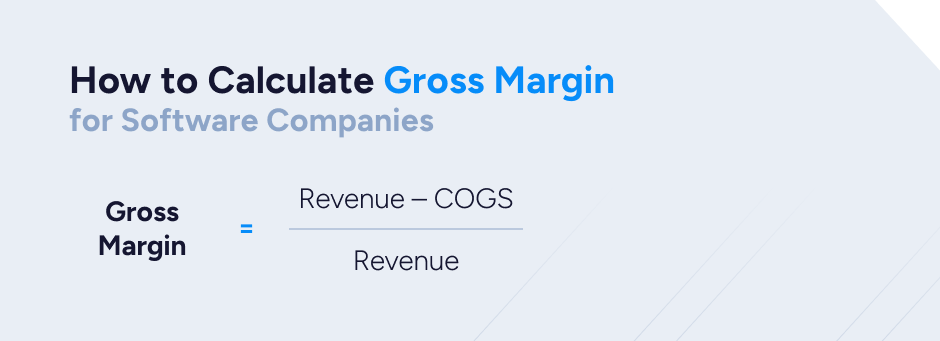
“Gross profit margin is the first efficiency metric investors see on the P&L,” SEG Principal Austin Hammer said. “A high gross margin sets the table for profitability and is typically a result of healthy operating metrics.”
But beware: Many software CEOs miscalculate the cost of goods sold by failing to account for less obvious expenses such as hosting, infrastructure, third-party software, and employees working in DevOps or customer support. It’s important to really understand what it costs to deliver each license or subscription.
What is a “Good” Gross Profit Margin Rate?
Based on our experience working with hundreds of software companies, we see average gross margins of around 70% and recommend aiming for a gross margin of 75% or higher.
A strong gross margin shows a company is:
- Scalable and can grow without significantly increasing costs
- Efficient in how it delivers its product
- Delivering value worthy of the price, which means that it is less vulnerable to competitive pressures
A gross margin below 60% could indicate your software implementations are too complex, time-consuming, or costly or that your customer support processes aren’t efficient. It may also indicate high infrastructure costs or that your product isn’t clearly differentiated relative to your competition.
Improving gross profit starts by understanding which types of customers or product offerings have the highest gross margin. Focus on attracting more business in those areas.
Optimize costs by automating manual processes, improving delivery models, and reducing unnecessary expenses. Evaluate your infrastructure costs.
Key Metrics for M&A Success
Focusing on gross profit and gross revenue retention isn’t just about drawing buyers. It’s about building a sustainable and scalable business for the long haul. It shows that you’re resilient, even in the face of uncertain conditions.
These factors don’t stand alone. Many other metrics influence investors’ and strategic buyers’ priorities.
For more insights on what buyers are looking for and how you can take advantage, download our 2025 State of SaaS M&A: Buyers’ Perspectives Report.
